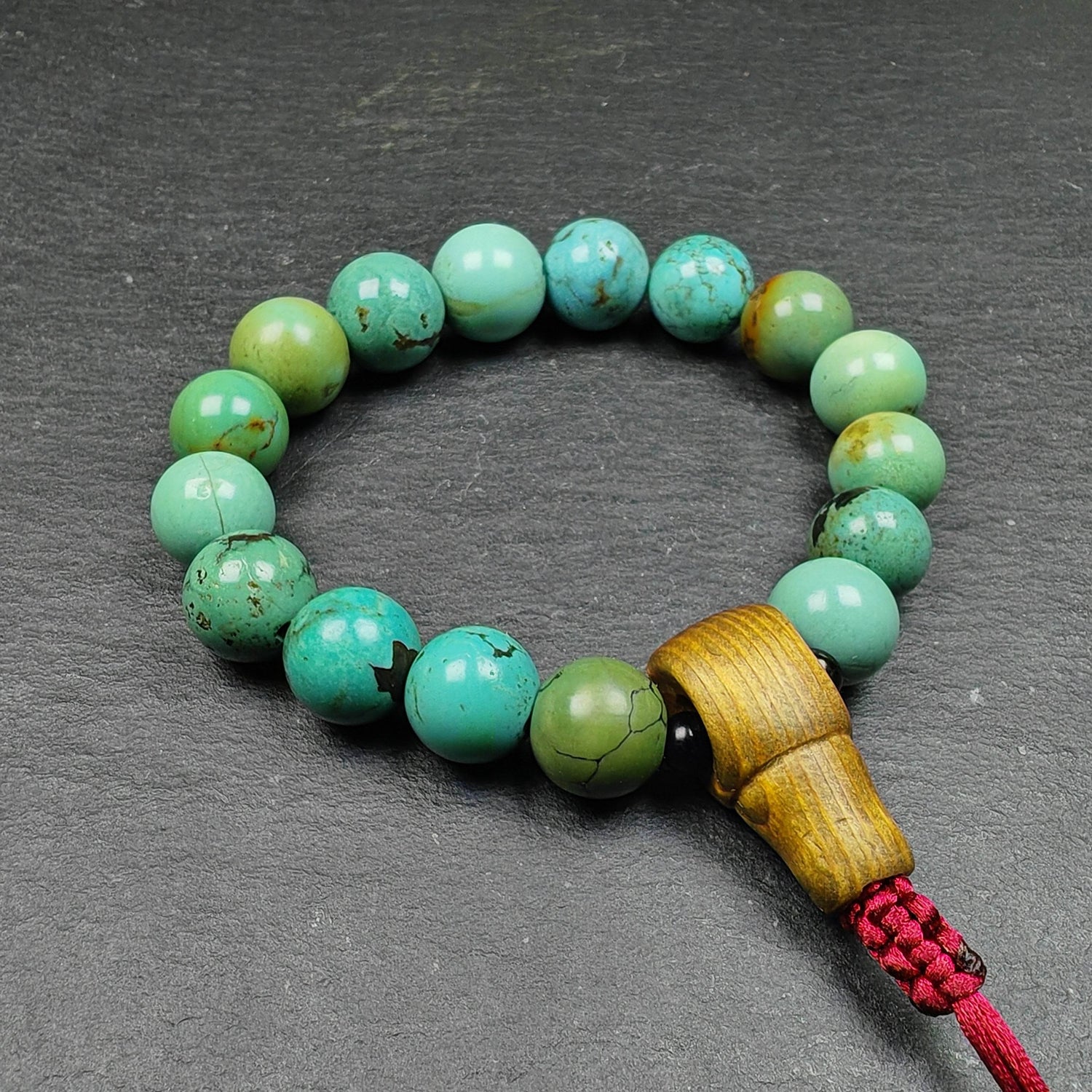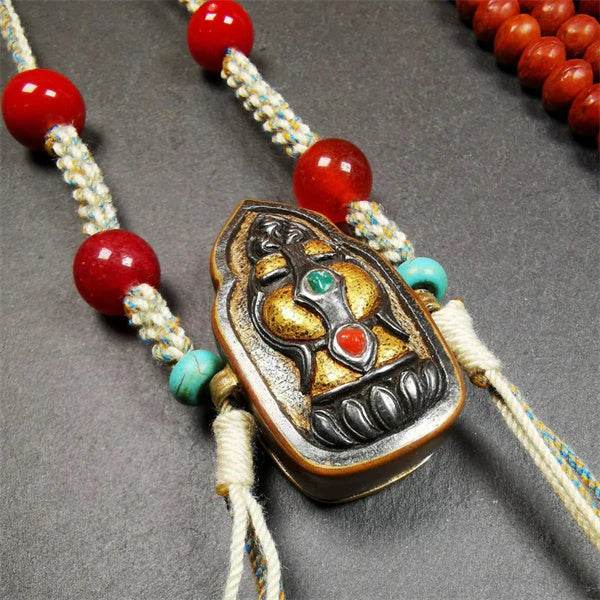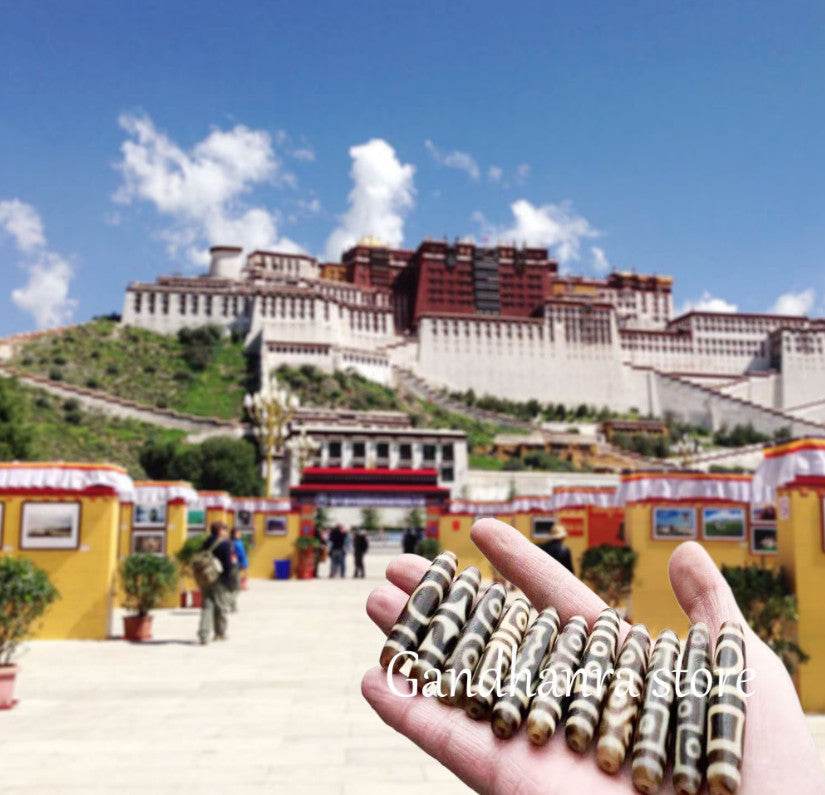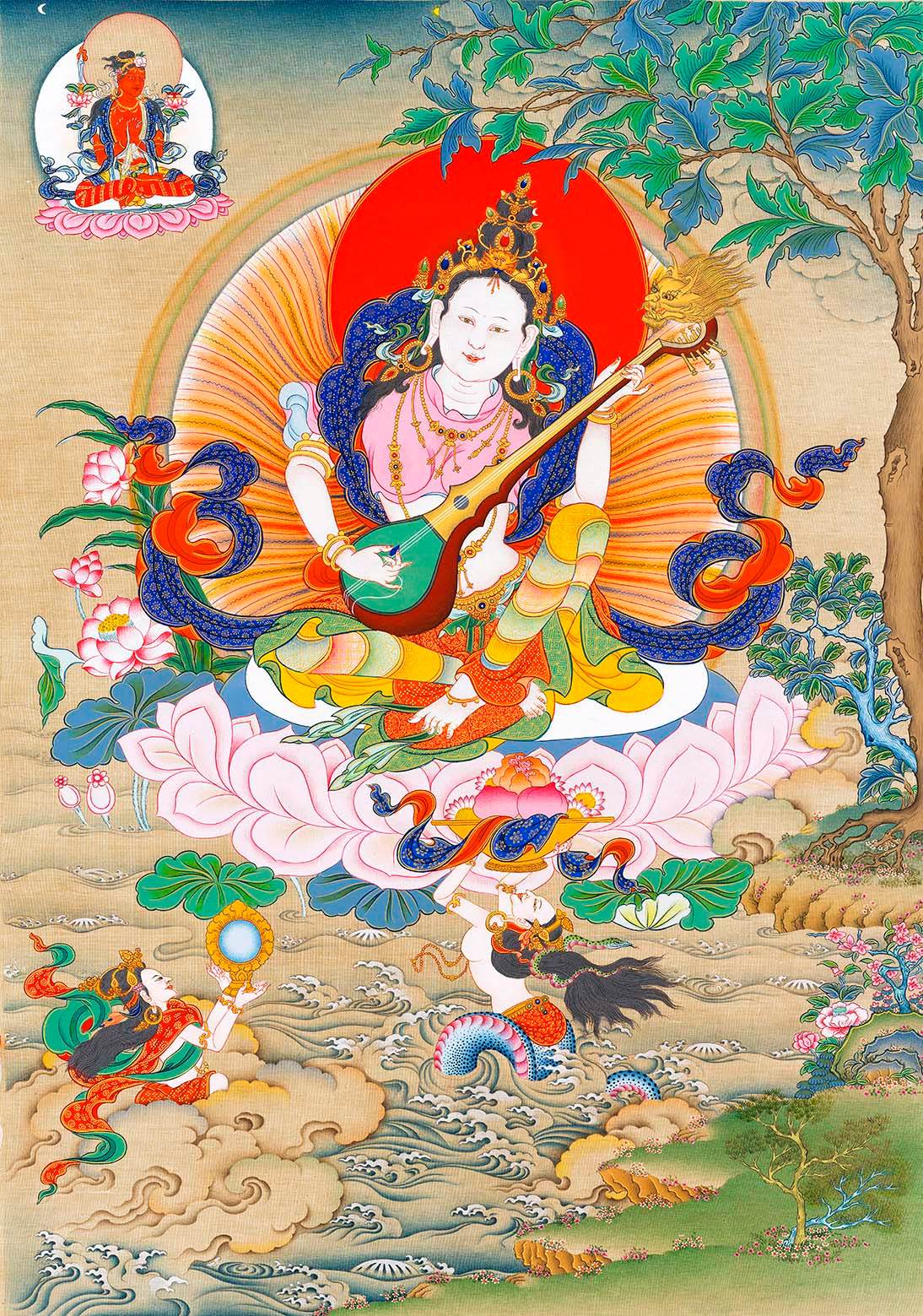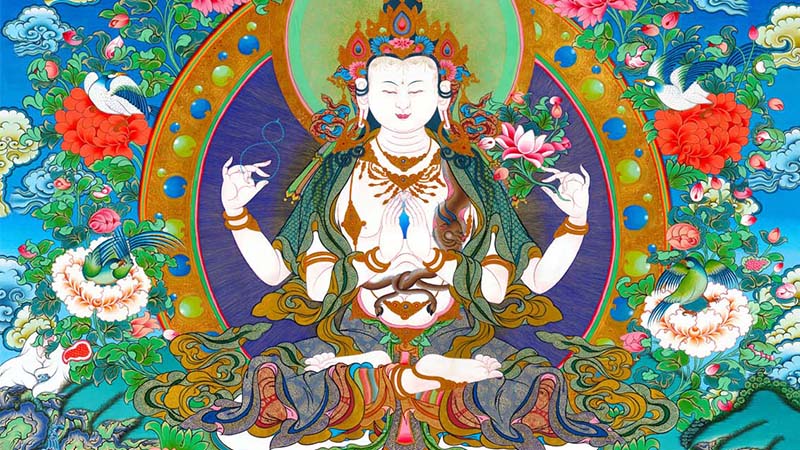
The Compassionate Chenrezig: Embodiment of Universal Mercy and Wisdom
Chenrezig, the Buddha of Infinite Compassion, represents the union of wisdom and skillful means in Tibetan Buddhism. As a central figure in Mahayana traditions, this bodhisattva vows to liberate all beings from suffering, guiding them toward enlightenment with unwavering mercy.




Click here to shop chenrezig thangka
Introduction to Chenrezig
Chenrezig (Sanskrit: Chaturbhuja Avalokiteshvara; Tibetan: Chenrezig Chak-zhi-pa) is one of the most revered forms of the Bodhisattva of Compassion. This manifestation symbolizes the four immeasurables:
Loving-kindness
Compassion
Joy
Equanimity
Unlike serene meditative deities, the Chenrezig is depicted in active engagement with the world, reflecting a commitment to alleviating suffering through compassionate action.

The Origins and Significance
Avalokiteshvara’s origins trace back to ancient Indian Buddhism, where the bodhisattva emerged as the embodiment of Amitabha Buddha’s compassion. According to sutras, Avalokiteshvara vowed to postpone enlightenment until all sentient beings were freed from cyclic existence.
The four-armed form is particularly prominent in Vajrayana Buddhism, representing the integration of wisdom (prajna) and method (upaya). Each pair of arms signifies the union of conventional and ultimate truth, while the central hands in prayer hold a wish-fulfilling jewel, symbolizing bodhicitta—the awakened mind.




The Symbolism of Chenrezig
Color (White): Purity, compassion, and the transcendence of defilements.
Four Arms:
The first pair of hands joins at the heart in anjali mudra, holding a wish-fulfilling jewel (bodhicitta).
The second right hand holds a crystal mala (prayer beads), representing the liberation of beings.
The second left hand holds a lotus flower, symbolizing purity and enlightenment.
Posture (Seated in Vajrasana): Stability and commitment to remain in samsara for the benefit of beings.
Lotus Throne: Arising from impurities unstained, like compassion in a troubled world.
The Heart Mantra of Avalokiteshvara
The universal mantra of compassion, shared across all forms of Avalokiteshvara, is:
“Om Mani Padme Hum” (ॐ मणि पद्मे हूं)




Meaning of the Mantra:
Om: The primordial sound, purifying pride and ego.
Mani: “Jewel,” symbolizing method and compassion.
Padme: “Lotus,” representing wisdom and purity.
Hum: The unity of method and wisdom, transforming ignorance.
Chanting this mantra invokes Avalokiteshvara’s blessings to cultivate compassion, purify negative karma, and overcome emotional obstacles.




How to Connect with Chenrezig
Meditation: Visualize radiant white light emanating from the deity, purifying suffering and awakening compassion.
Mantra Recitation: Chant “Om Mani Padme Hum” 21, 108, or more times daily.
Offerings: Light incense, offer water bowls, or recite prayers like the King of Prayers (Samantabhadra’s Aspiration).
Practice Compassion: Emulate the bodhisattva’s qualities through acts of kindness and ethical living.

Conclusion
Chenrezig serves as a timeless reminder that compassion and wisdom are inseparable. By embracing this bodhisattva’s teachings, we learn to transform adversity into spiritual growth and extend unconditional kindness to all beings.
May the compassion of Avalokiteshvara illuminate your heart and actions!
Have you ever meditated on Chenrezig or incorporated the “Om Mani Padme Hum” mantra into your practice?
Share your insights in the comments below!


